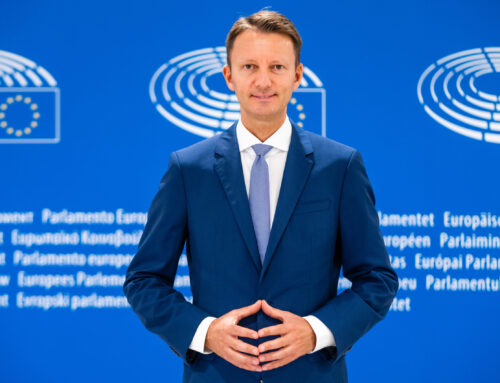Infrastructure:
- Infrastructure investments are vital for investors: even additional 100 km of highway may reduce up to 50% the transportation costs of companies.
- If the transportation costs are reduced, money is left for other expenses, including salaries, investments and the creation of new jobs.
- Part of the investors I visited told me that, although they would rather transport their products by railway, they choose to transport it by road because the Romanian railway comapny (CFR Marfă) is slow, unreliable and, in some cases, does not have proper wagons for the products to be transported. This makes investors transport most products by road and leads to significant traffic congestions.
- The costs of transportation, both by railway and by road, in the case of certain companies may be twice or even three times higher than in other countries from the region. This is a serious competitive disadvantage.
Education:
- Public authorities should take the initiative and invest in vocational education. Investors are ready to contribute their part, but the initiative needs to come from public authorities. We should not wait for the investors to realize that they have no qualified workforce to access. The authorities are the ones that should have this initiative, should invest in the technological education. Romania needs new generations of qualified workers, if existing investors are to develop and new investors to be attracted.
- I will initiate dialogues with local public authorities and with the Ministry of National Education in order to request them to initiate discussions with investors, to see what the professions are that they need in the future, according to their development plans. We need to educate the pupils for the jobs of tomorrow.
Cooperation with local authorities:
- In some cities, such as Cluj-Napoca, the local authorities, the City Hall and the Mayor, are a real support for investors, but in others they fail to make sufficient efforts in order to attract investors.
- To bigger cities, like Braşov, Timişoara and Cluj, investors come naturally because of the existing universities and qualified workforce. In the medium and small towns, the efforts which authorities need to make for attracting investors are bigger.
- Nevertheless, I noted on the investors’ part the availability to also invest in smaller towns, because they no longer find workforce as easily as before in the big cities.
- But in order for one to make sure that investors do come to one’s town, and not to any other small town from Romania, the local authorities from that specific town/village need to raise their game to attract investors. I want to see investors creating more high-skilled jobs and count less on the cheaper workforce.
- Investors must leave the environment cleaner than before they invested, and not more polluted. Investors should support the community in which they conduct their businesses, they should contribute to the renovation of a school, of a hospital or of a park, and they should support cultural, sports activities. Many investors already do this.
- Investors should be as transparent as possible in their businesses because, if otherwise, they raise suspicions on the part of the community in which they conduct their business.
- Romania has absorbed only 55% of the European funds for infrastructure allocated in the period 2007 – 2013, which means EUR 11 billion. We will further absorb only maximum EUR 1 billion until the end of this year. All funds which are unused by the end of 2015 will be lost. This means Romania is losing EUR 8 billion of EU funds at the end of this year.
- What I can do, as a Member of the European Parliament, is to work on adapting/simplifying European rules in order to increase the absorption of the European funds in the future (for the budgetary period 2014 – 2020) in order for the small investors to obtain more easily financing from European non-reimbursable funds.








Stay In Touch